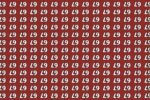Join on WhatsApp
Get the latest updates directly on WhatsApp – motivation, news & more!
Optical illusions have a special charm they play tricks on your eyes, challenge your focus, and spark that irresistible urge to prove your observation skills. One of the latest viral brain teasers asks you to do just that: spot the number 339 cleverly hidden among a sea of 329s. The twist? You have only 7 seconds to succeed.
At first glance, the puzzle looks almost impossible. Each number seems identical, forming a hypnotic pattern that confuses the brain. But for those with sharp eyes and steady concentration, the elusive 339 eventually reveals itself proving just how powerful careful attention can be.
Why Optical Illusions Hook Us So Easily
People love challenges that appear easy but turn out to be tougher than expected. Optical illusions fall right into this category. By repeating nearly identical patterns, they force the brain into “auto-pilot mode.” Instead of analyzing each number carefully, your mind assumes everything is the same, and that’s when the hidden detail slips right past you.
This blend of simplicity and difficulty is what makes these puzzles addictive. They’re short, fun, and give instant feedback either you spot the difference, or you don’t. And when you finally solve it, the “aha!” moment feels extremely rewarding.
The Puzzle in Focus
In this particular challenge, rows of the number 329 fill the grid. But somewhere in the mix lies a single 339. The only change is one digit, yet that tiny switch is enough to fool most people.
The real challenge comes from the 7-second time cap. Without a limit, anyone could patiently scan the grid and find the odd number out. But under pressure, the eyes rush, the brain skips, and the 339 blends in almost perfectly. That’s why only the most eagle-eyed viewers can spot it in time.
Did You Find It?
If the puzzle had you stumped, don’t worry you’re not alone. The number 339 is tucked away in the third row from the bottom, near the center of the image. Once you see it, the difference becomes glaringly obvious, and you wonder how you missed it in the first place.
This is the magic of illusions: before the reveal, they feel nearly impossible; after, they seem almost too simple.
Why Solving Illusions is Good for Your Brain
Beyond entertainment, these puzzles bring real mental perks:
- Sharper focus: They train you to notice fine details under pressure.
- Better memory: Regularly spotting tiny differences strengthens visual recall.
- Cognitive agility: Your brain learns to adapt to unexpected changes more quickly.
- Stress relief: Concentrating on a small task clears mental clutter.
- Social fun: Competing with friends or family adds playful rivalry.
What Makes This Puzzle Unique
Most illusions use colors, shapes, or hidden images. This one stands out because it uses numbers symbols we see daily and assume we process effortlessly. That assumption is exactly what tricks the mind. The single-digit change tests how well you can break away from pattern recognition and focus on tiny details.
How to Improve at Spot-the-Difference Puzzles
Want to get better at challenges like this? Here are some quick tips:
- Scan systematically move row by row instead of randomly jumping around.
- Break numbers into single digits instead of reading them as a whole.
- Stay calm and relaxed; stress only blurs details.
- Practice regularly with different illusions to sharpen your eye.
- Train in short bursts of focus, just like the 7-second time frame.
Final Thoughts
The “Spot the Number 339” puzzle is a brilliant test of speed, focus, and observation. It looks simple, but the repeating numbers make it surprisingly tricky. If you managed to crack it within 7 seconds, consider yourself sharp-eyed and quick-thinking. If not, don’t worry every attempt trains your brain to perform better next time.
Optical illusions remind us that even the most familiar things can deceive us. They’re more than just entertainment they sharpen the mind, build patience, and remind us that details matter. So next time you face a puzzle like this, take it as a fun opportunity to test your perception and maybe even challenge a friend to see who spots it first.



